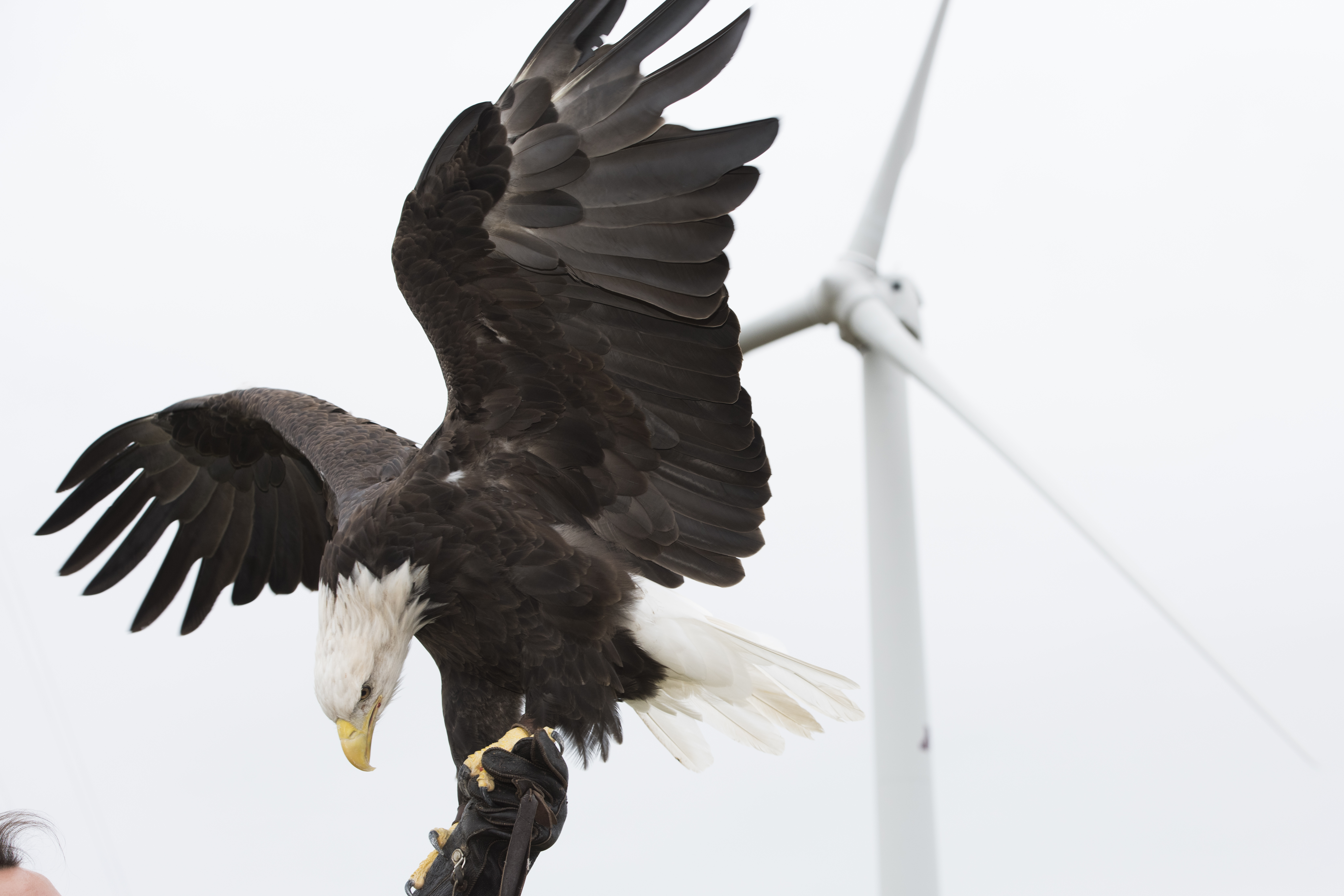Newly Funded: Identifying acoustic stimuli to deter eagles from wind turbine airspace
August 6, 2021

For all the benefits wind energy provides, there’s a notable drawback: federally protected bald and golden eagles sometimes fatally collide with turbine blades.
With $261,000 in new state assistance, University of Minnesota researchers from the St. Anthony Falls Laboratory and The Raptor Center, including Julia Ponder, DVM, MPH, expect to fill a significant research gap on the effects of acoustic deterrent devices, a promising method to reduce eagle collisions.
The researchers will expose eagles to an array of natural and synthetic stimuli in controlled environments and log behavioral responses to develop an ideal acoustic deterrent that would result in an eagle veering from its flightpath.
Several studies in recent years have tried to pin down the efficacy of acoustic deterrent systems, though all were conducted in uncontrolled environments—resulting in an unreliable effectiveness range of 7 percent to 88 percent. Neither had previous studies considered the hearing attributes of eagles. Ponder’s controlled study will address both of those issues.
The team hopes findings will for the first time provide acoustic deterrent system designers and developers a solid foundation upon which to confidently build new technologies. The project is expected to run through June 2023.
The project was funded by the Environment and Natural Resources Trust Fund as recommended by the Legislative-Citizen Commission on Minnesota Resources.



